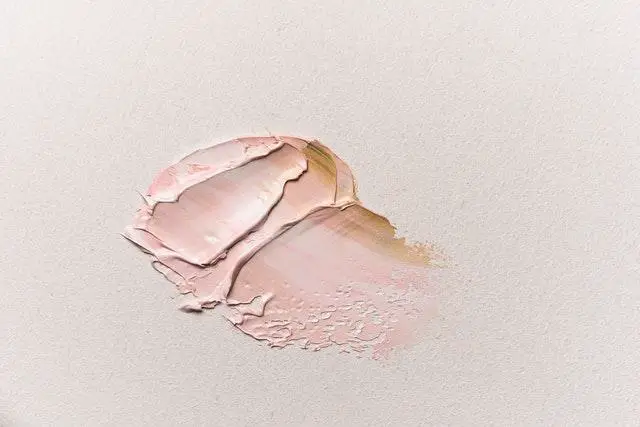Acrylic paint is a very versatile paint that can stick to almost anything. It sticks to canvas, paper, board, wood, air-dry clay, polymer clay, and plaster. With surface preparation and sealing of the paints, it sticks to plastic, metal, glass, and fabric. I thought it would be interesting to know, what surfaces acrylic paint does not stick to.
Acrylic paint does not stick to waxy, greasy, and moist surfaces. The paint peels off even if fully dry. Other than that, acrylic paint sticks to almost anything, with proper surface preparation and sealing of the paint. Surprisingly acrylic paint sticks well to silicone and oily surfaces.
| Surface | Adhere well (yes/no) | Notes |
| Oily surface | Yes | The paint adhered well but peeled off with moisture |
| Greasy surface | No | The paint peeled off after scratching and with moisture |
| Waxy surface | No | The paint peeled off after scratching and with moisture |
| Silicone | Yes | The paint adhered well but peeled off with moisture |
There are some other unusual surfaces for which acrylic paint can be used. But if you did not prepare the surface well and seal the painting, the paint will not stick and will not last long.
What surfaces does acrylic paint not stick to?
Generally, acrylic paint will not stick to oily, waxy shiny, and hard, surfaces. This includes painting with acrylic over oil paint. When you paint with acrylics on a smoother surface, the paint will dry slowly and the paint can move freely. If you use a more porous, absorbent surface like canvas, the paint will dry quickly and have less movement.
I found that many people say acrylic paint will not stick to wax, grease, silicone, or oily, and shiny surfaces. I experimented and checked if acrylic paint sticks to the mentioned surfaces.
Adhesion test to check if acrylic paint stick
You can check the sticking ability of acrylics on an unusual surface with the adhesion test. I did the adhesion test for oily, waxy, greasy, and silicone surfaces I created as follows on a gessoed canvas.
I used baby oil, the wax of a candle, silicone from the glue gun, and actual grease from a tub on a gessoed canvas for the experiment.
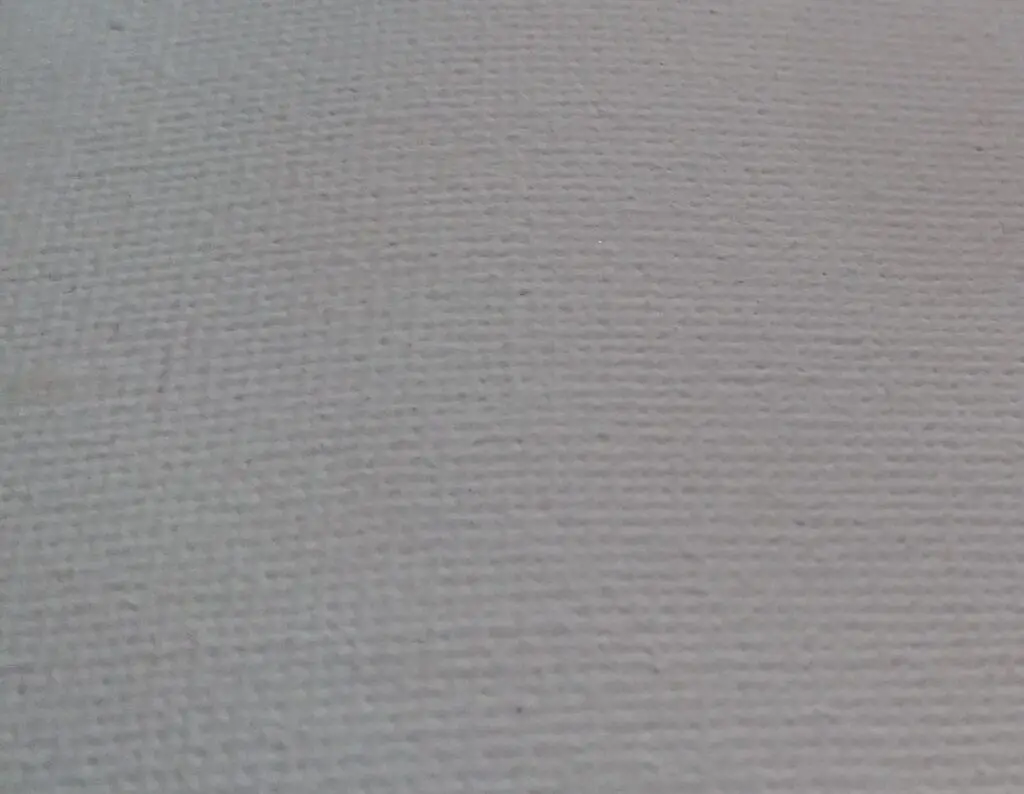
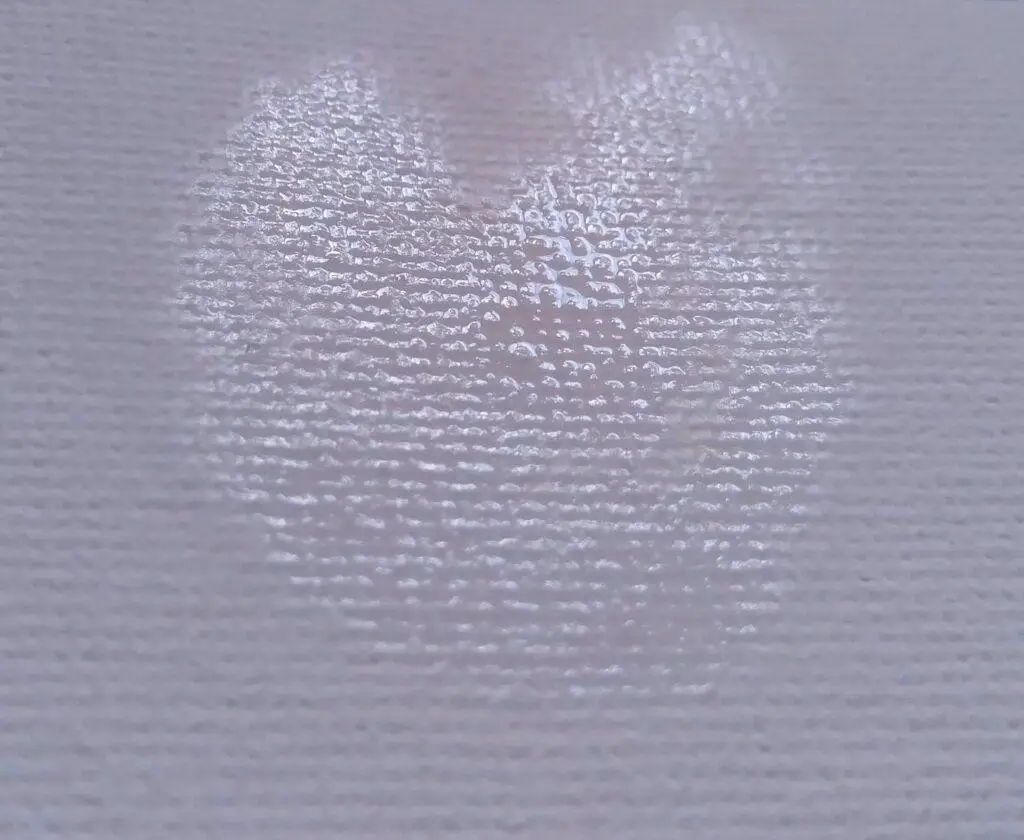
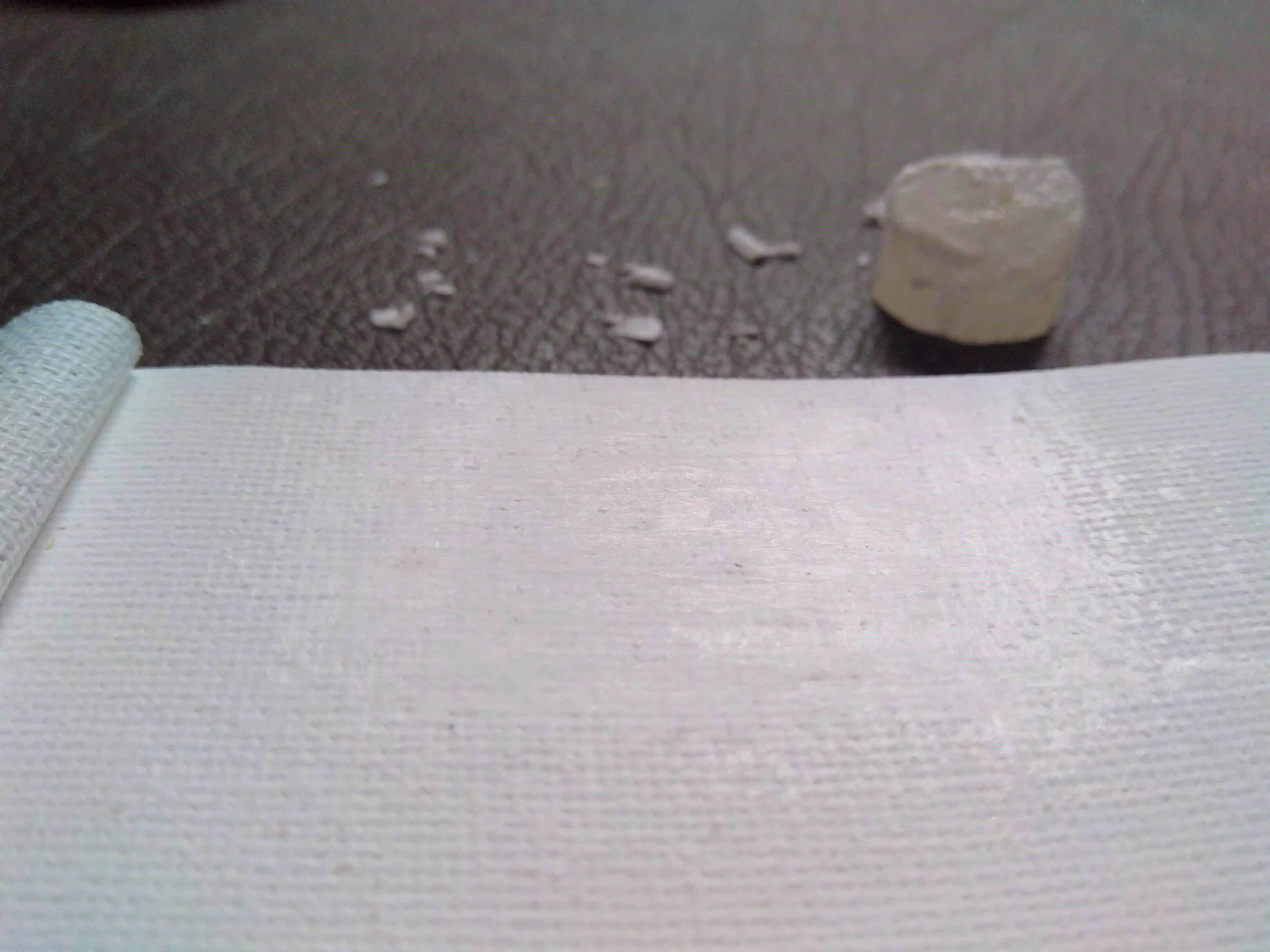
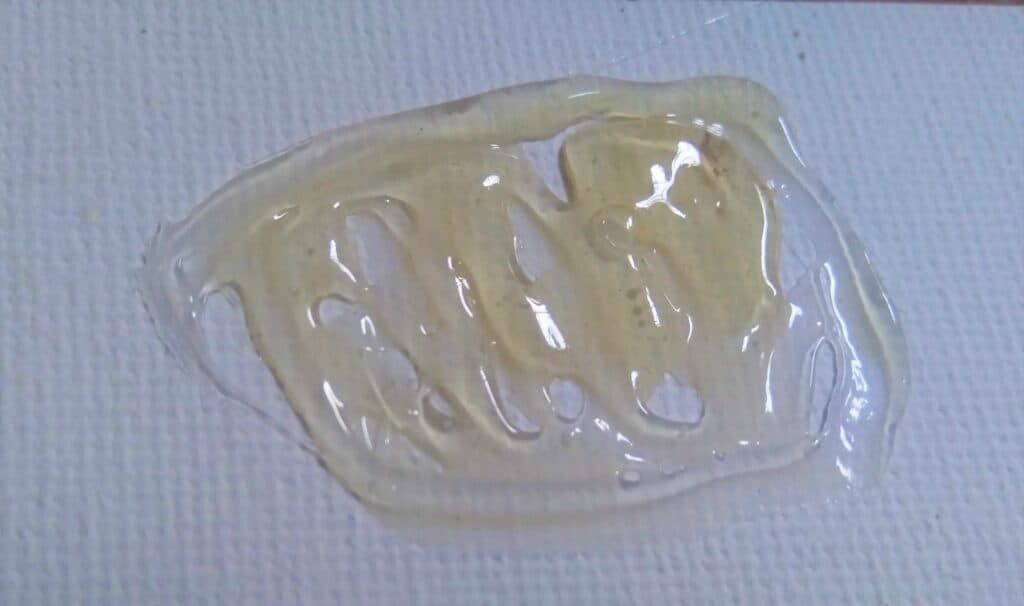
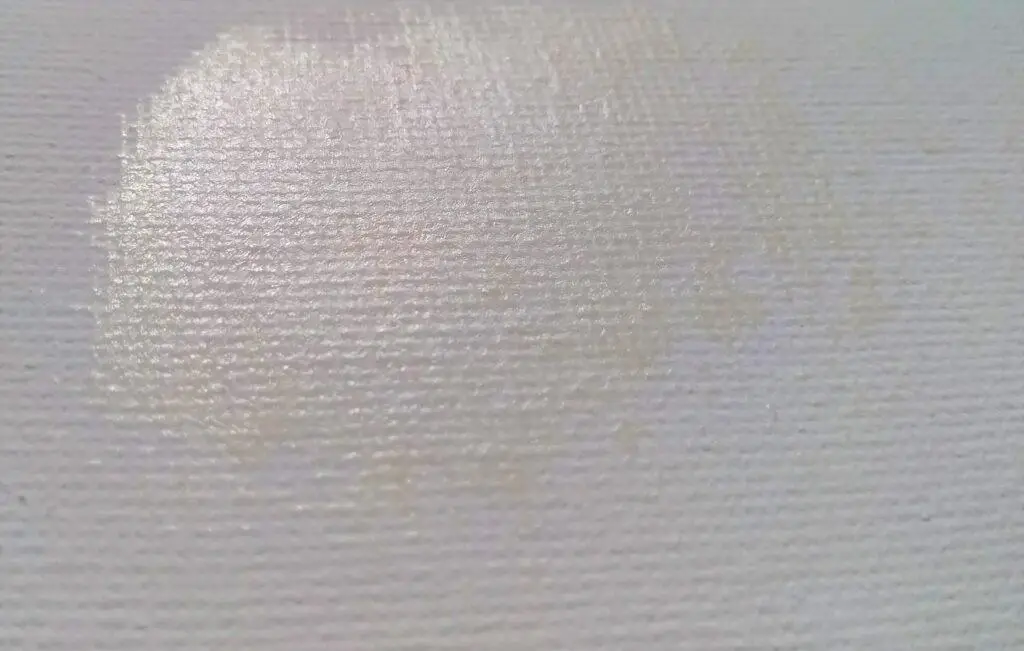
Following is the way I did the adhesion test for the surfaces.
1. Apply the paint or medium to the surface and let dry thoroughly. I used the same ultramarine blue acrylic color on every surface. and I used the same brush to apply the paint. Let the paint cure for at least 72 hours before continuing (humid conditions make the curing time longer). In this case, I left the paint to cure for 8 days.
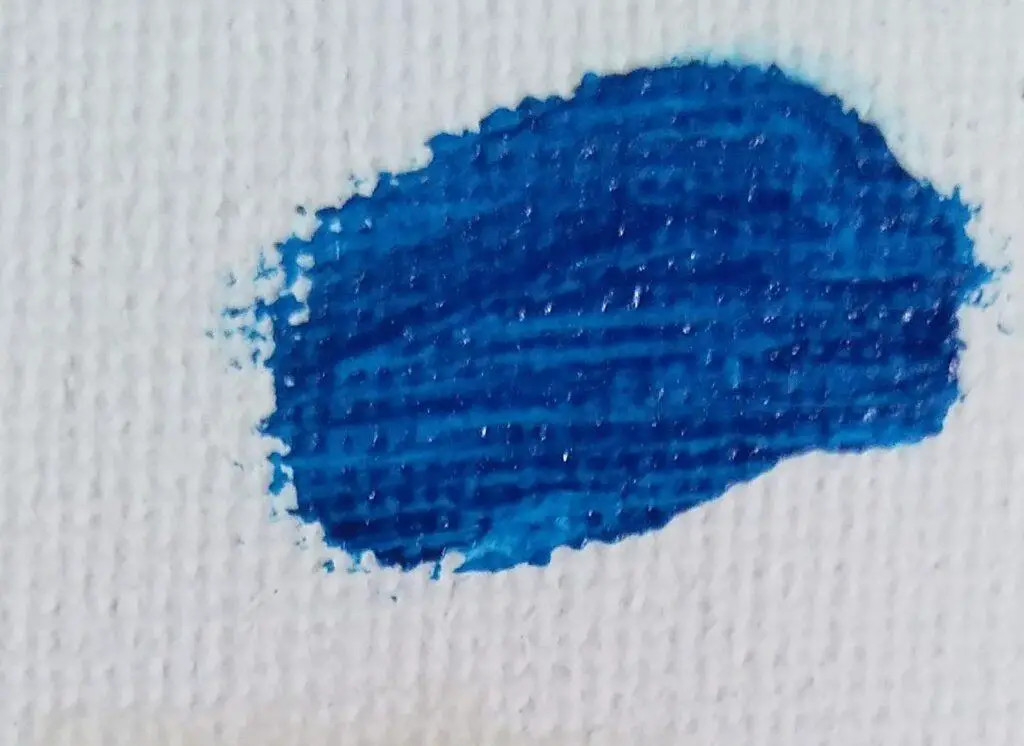
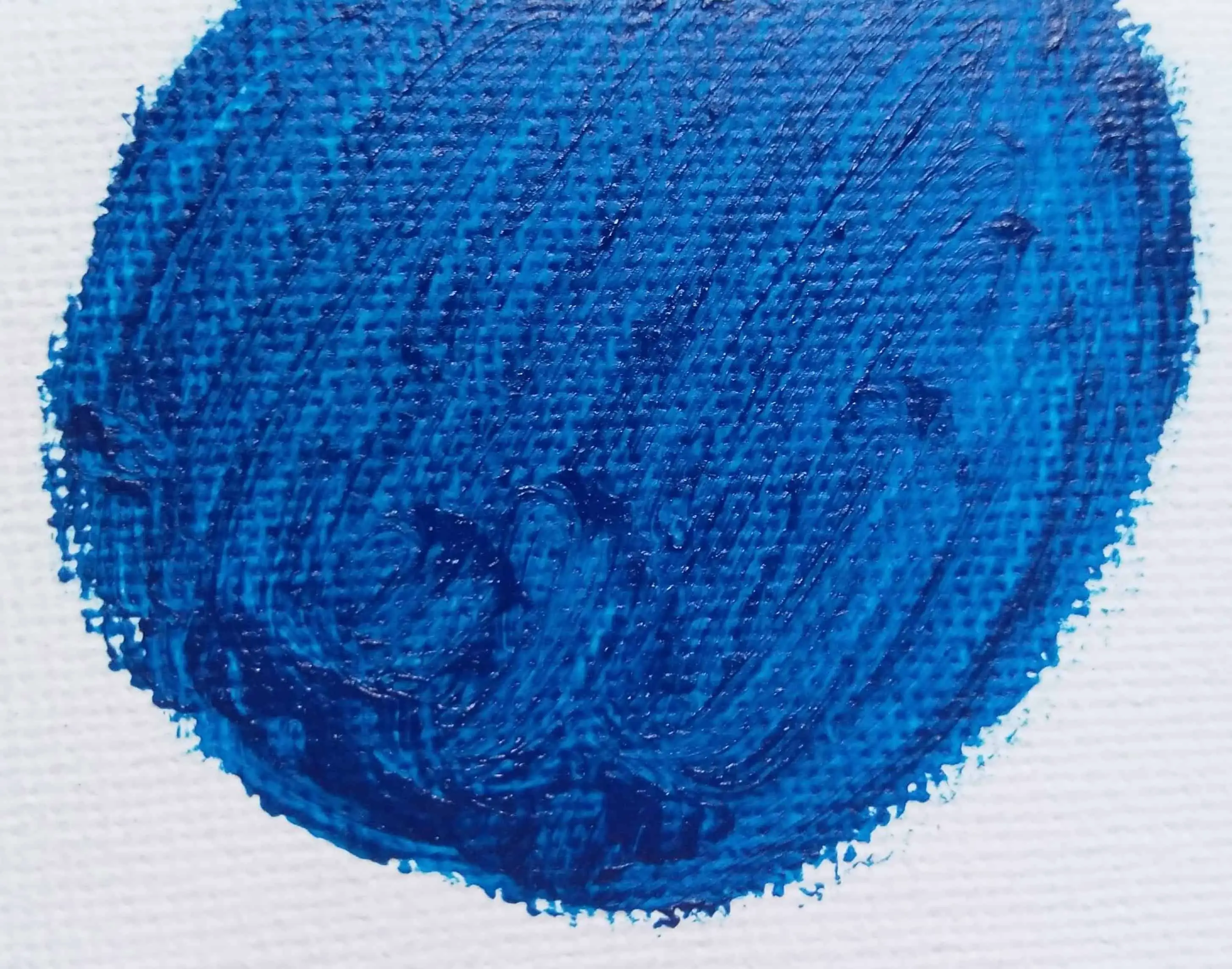
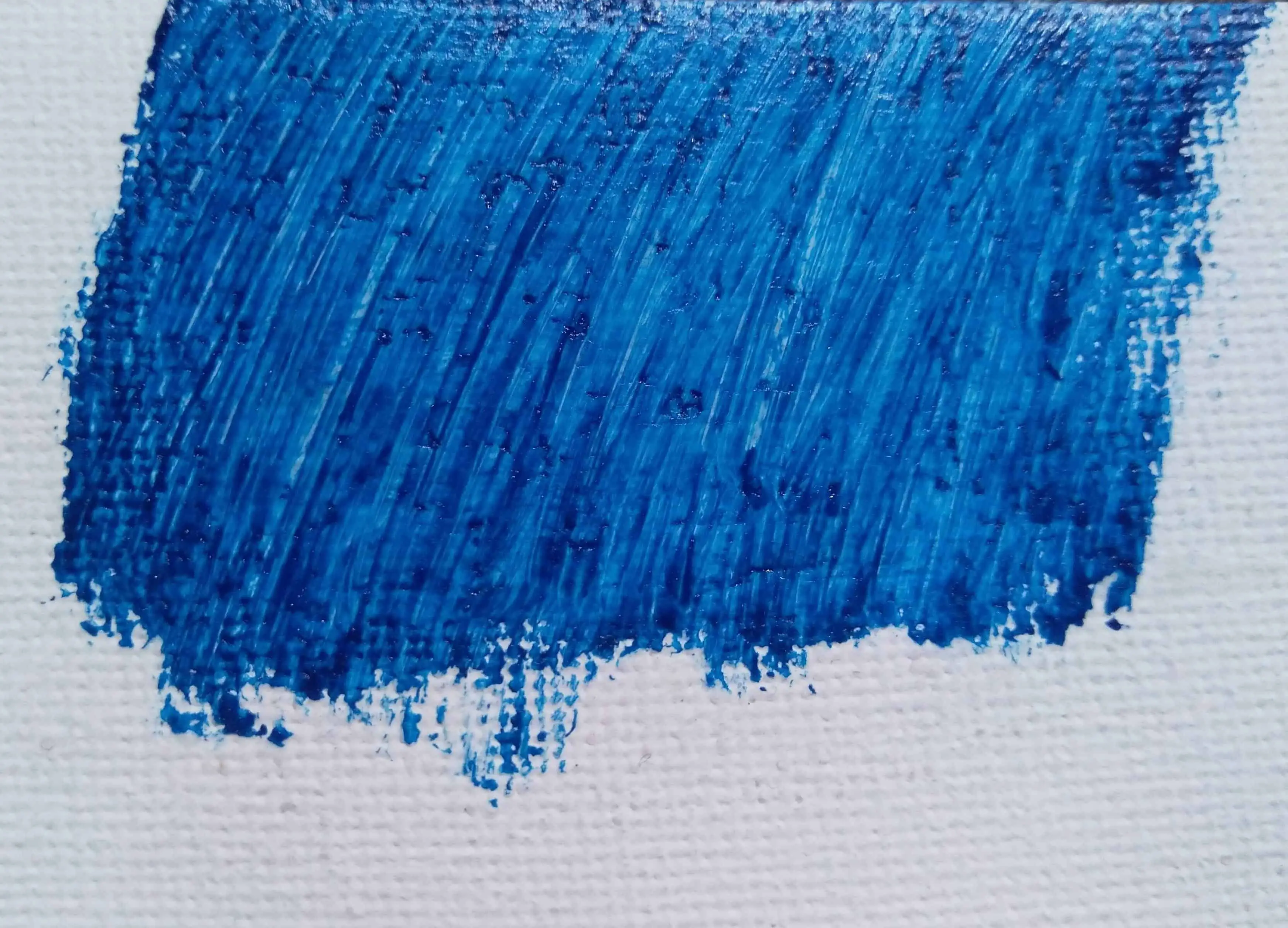
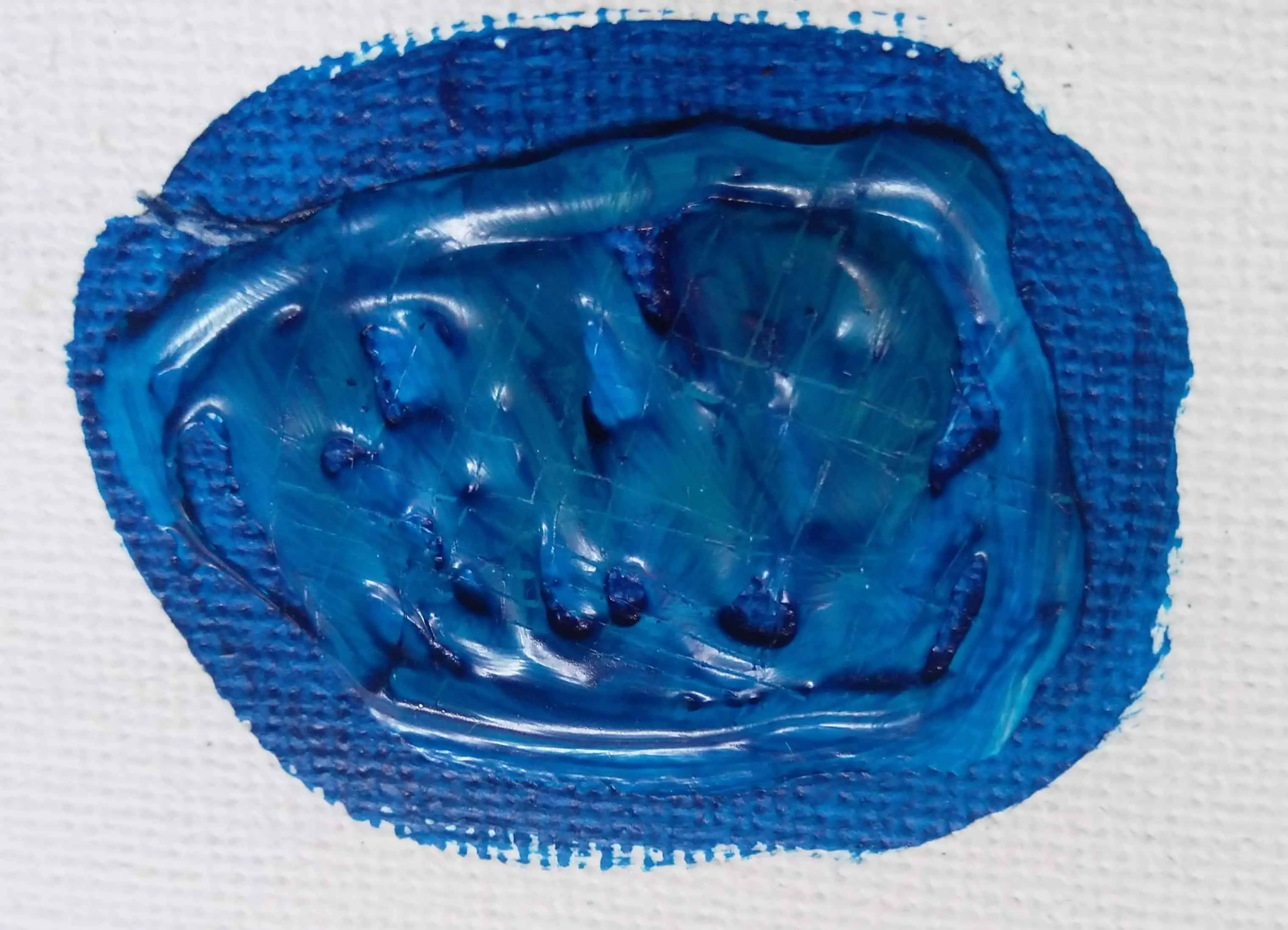
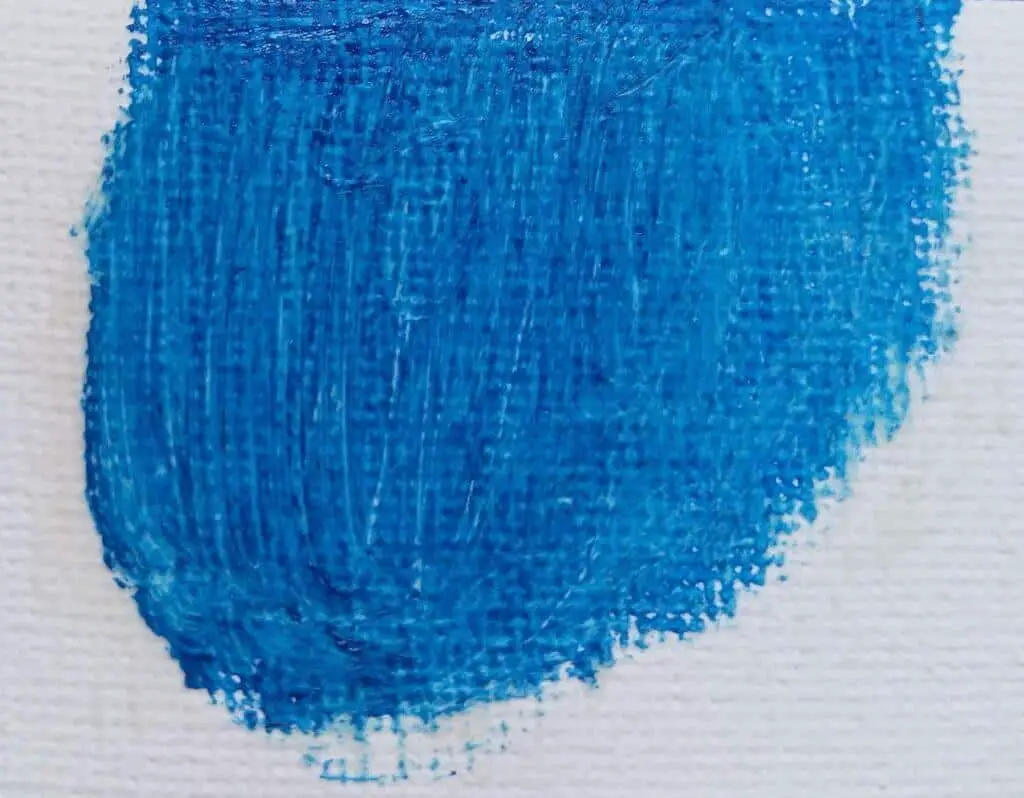
2. After drying completely, scratch or score the surface with a sharp knife in a crosshatch pattern
3. Apply the masking tape, firmly over the scratched surface and burnish it firmly.
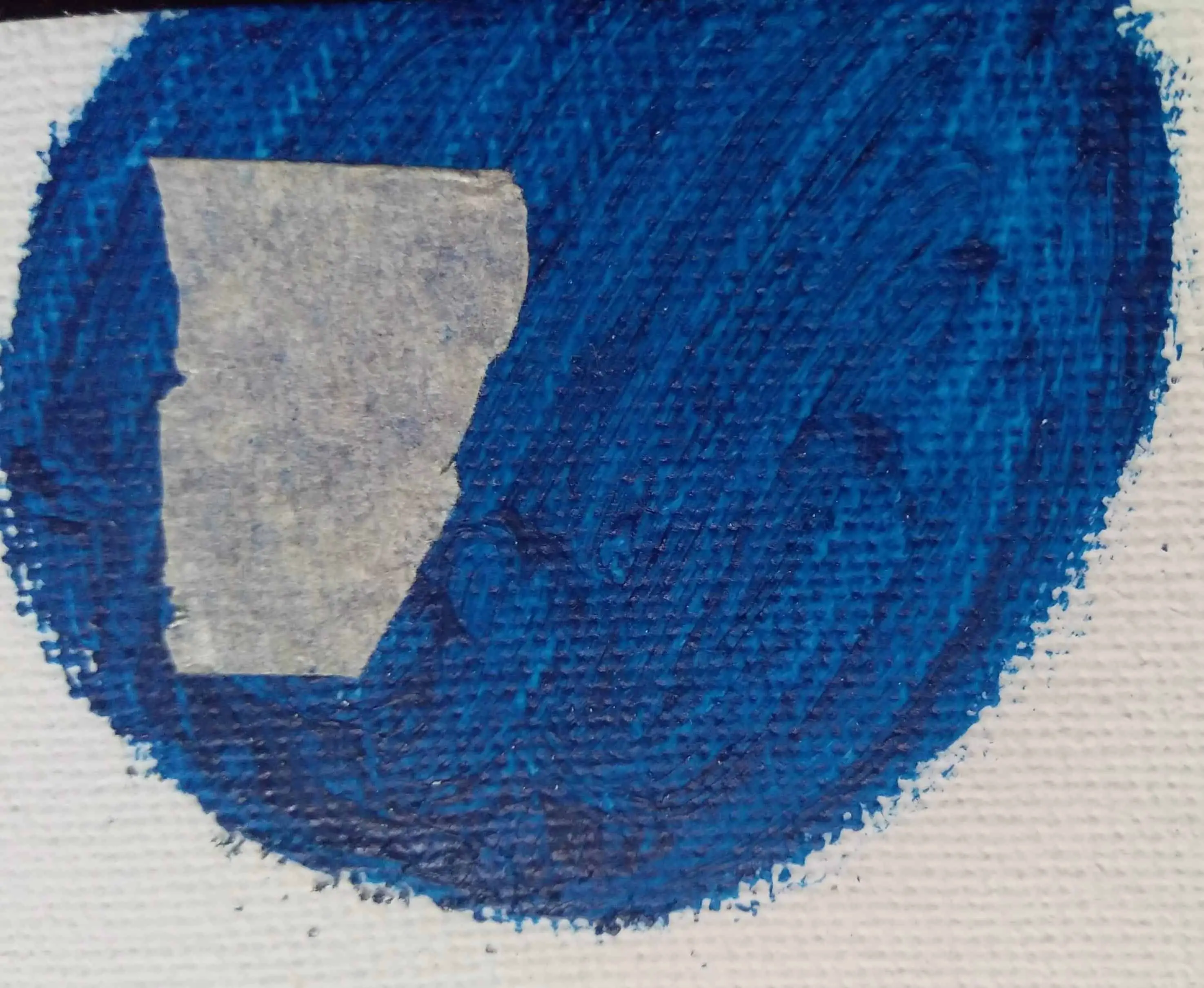
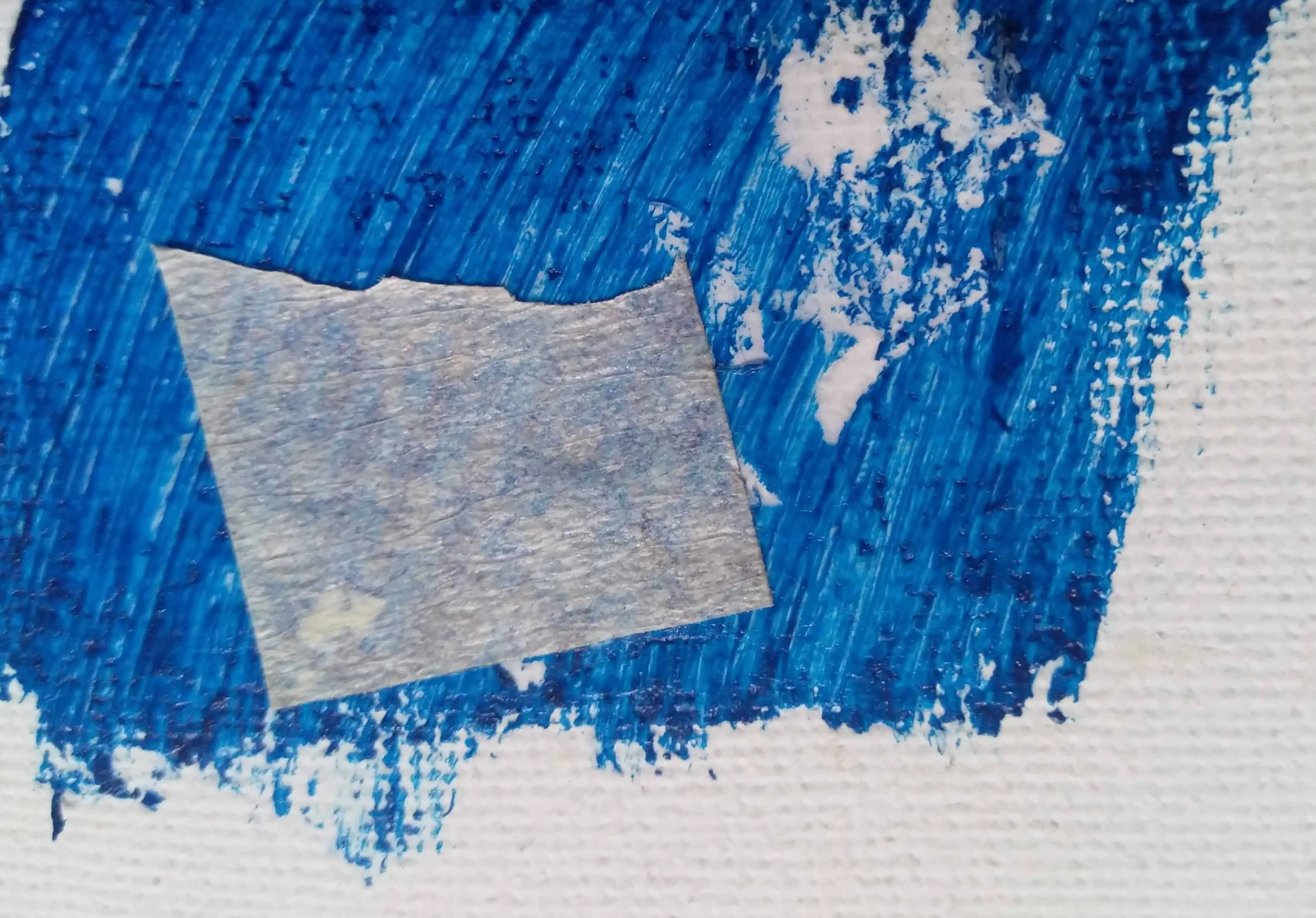
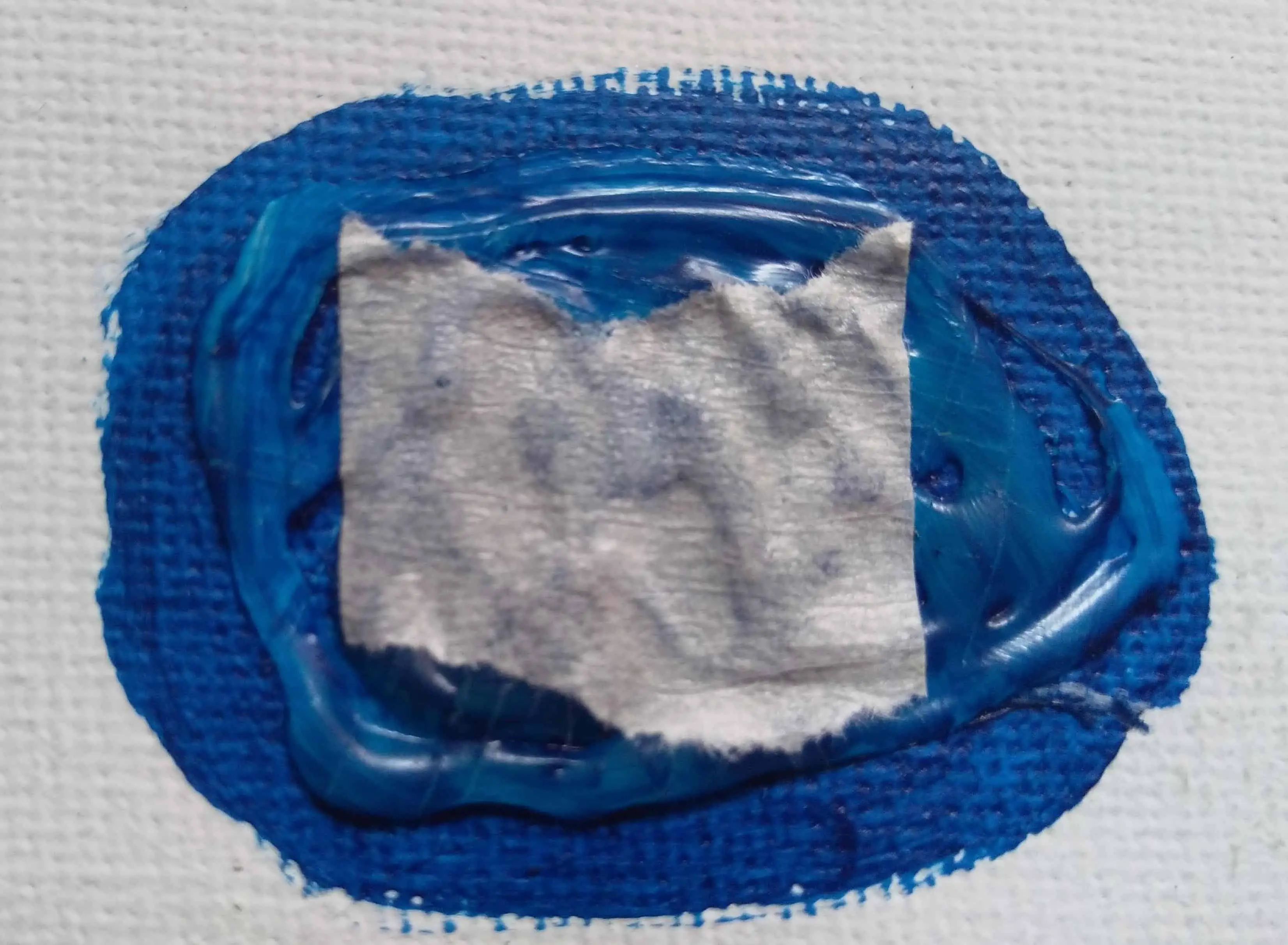
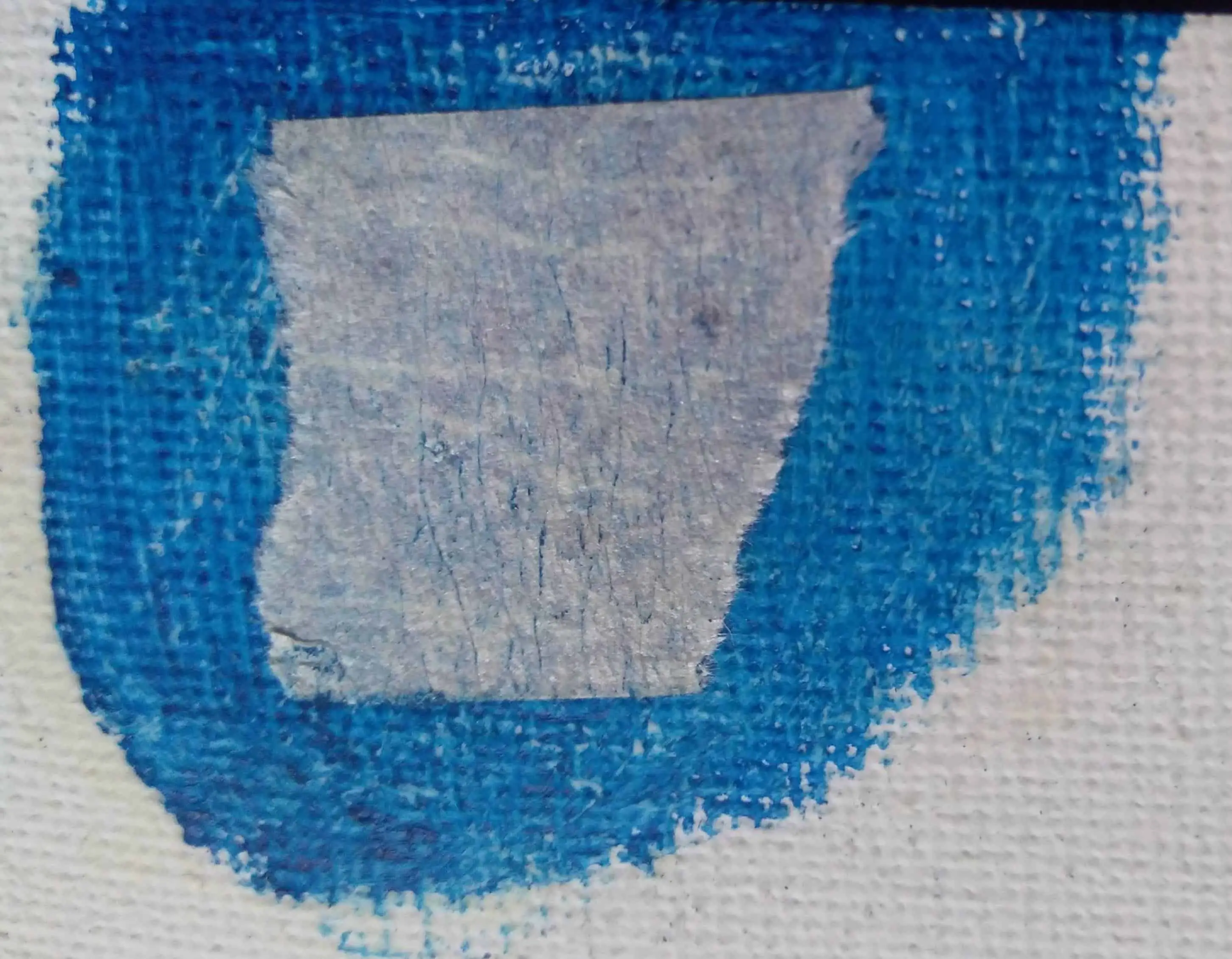
4. Remove the masking tape slowly. Check if any paint comes off with the tape. If there is any paint, adhesion to the surface is not good. You will need a different surface preparation method or the surface is not suitable for the paint or medium tested.
Following are the results on different surfaces, after removing the masking tape.
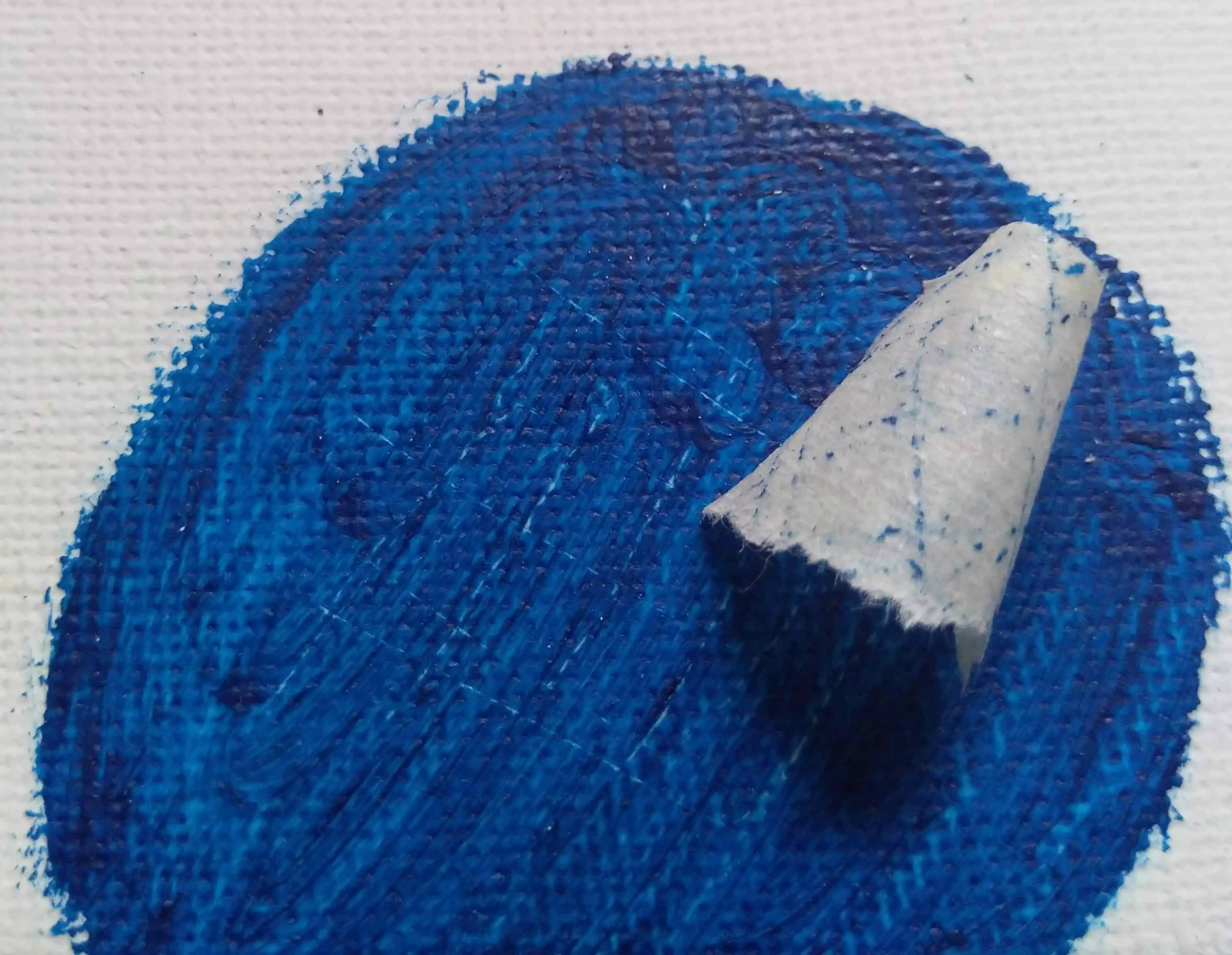
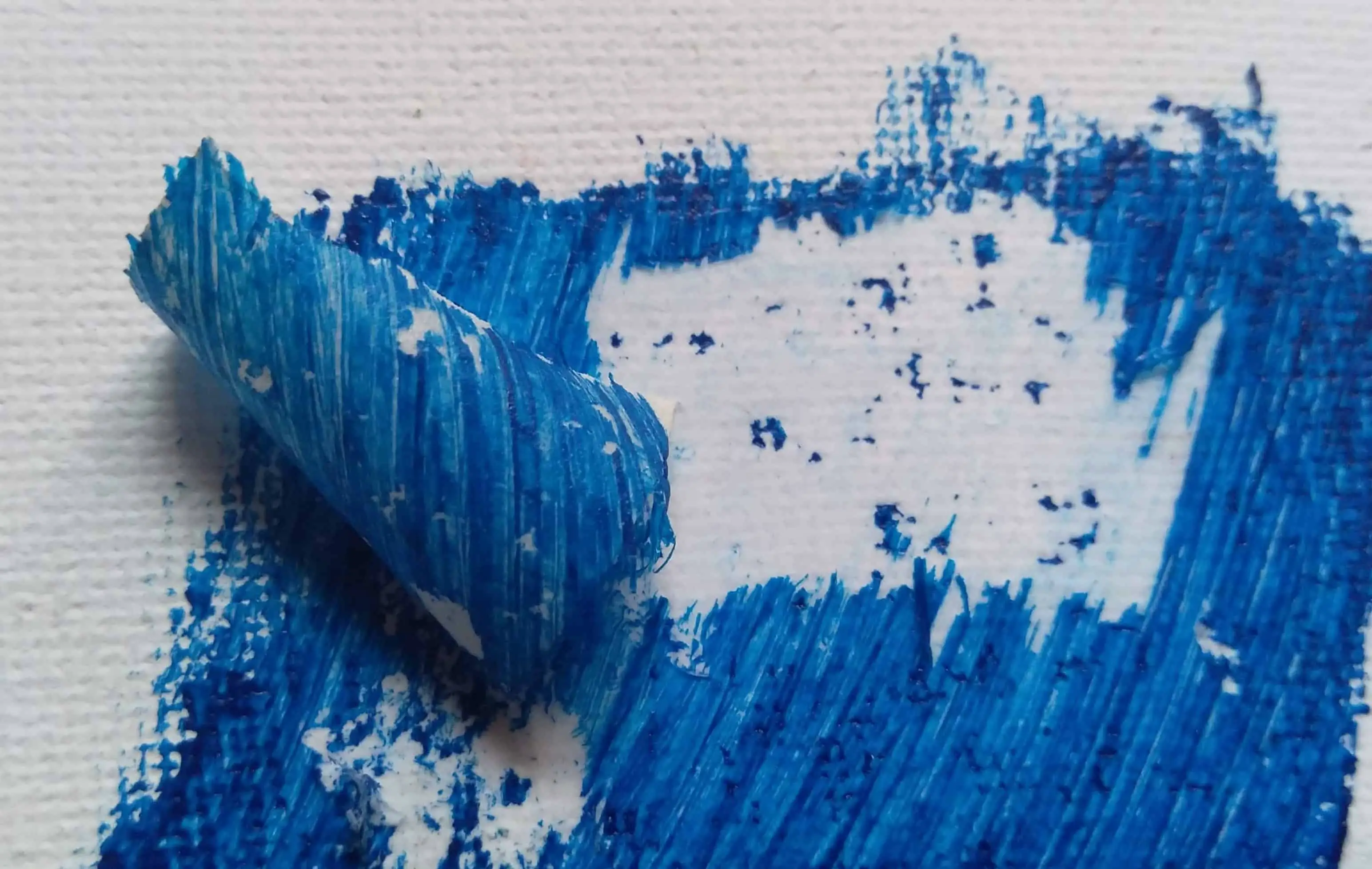
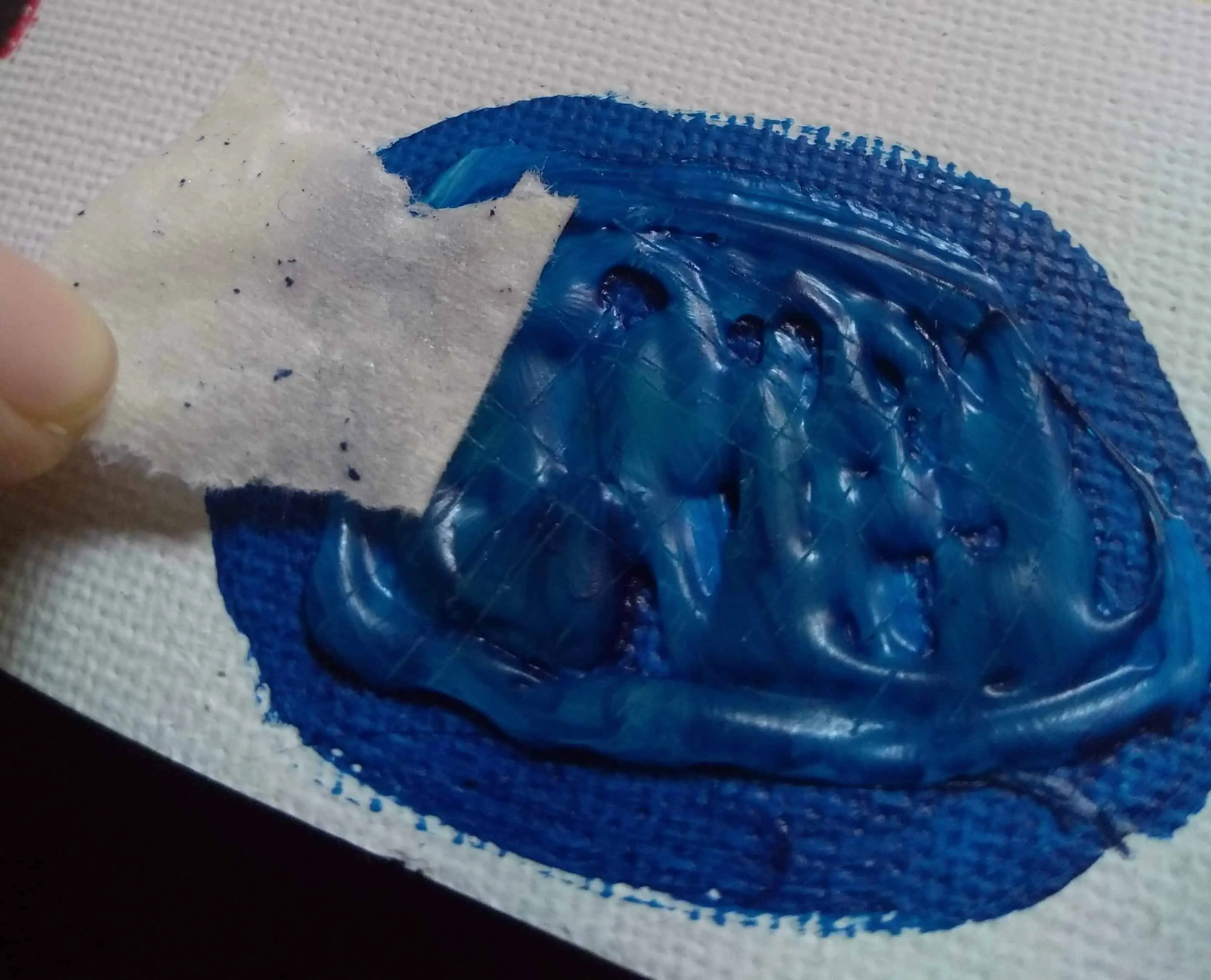
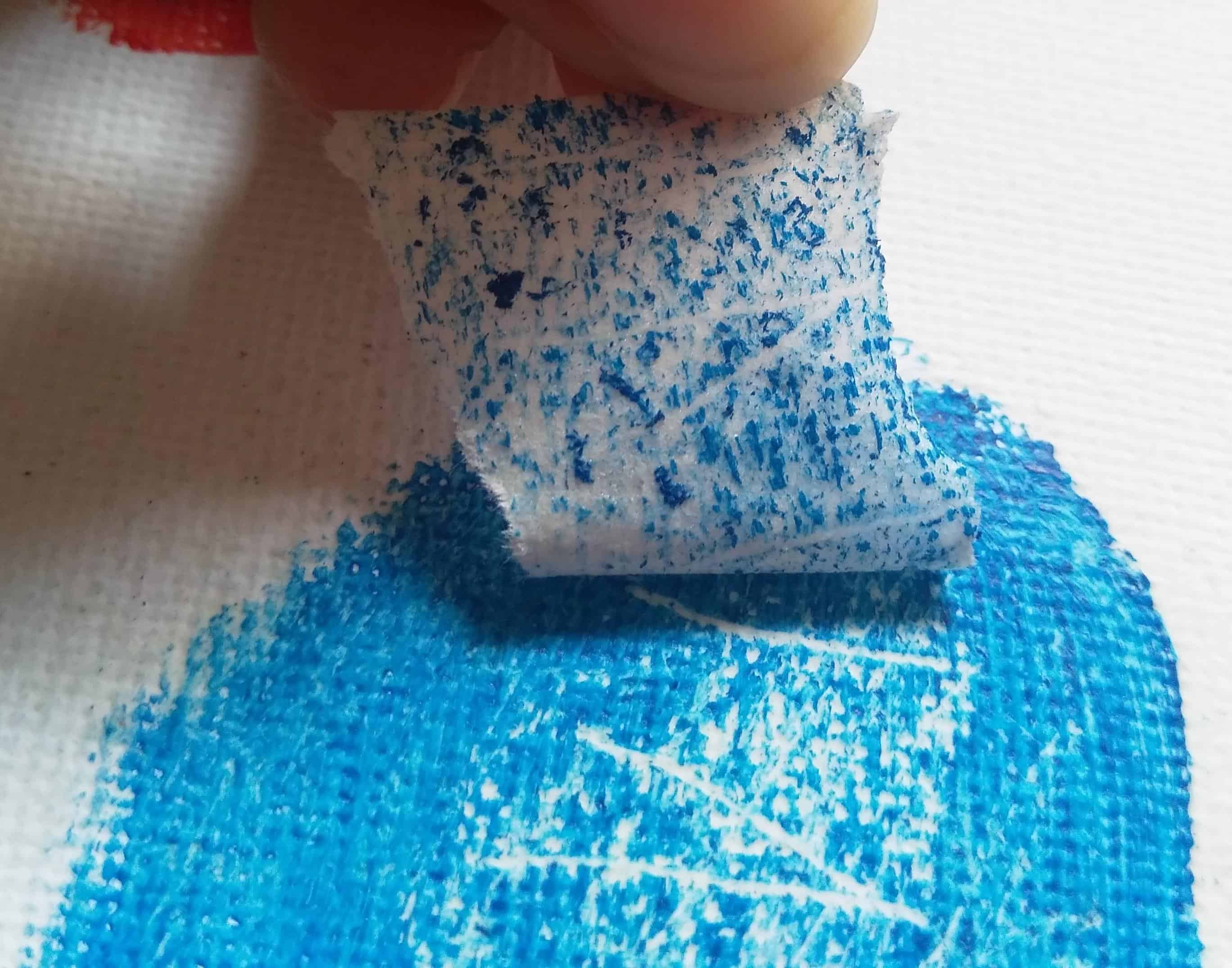
As you can see in the images, acrylic paint does not stick to the waxy and greasy surface. However, it sticks well to the canvas itself, silicone, and oil which was unexpected. Therefore always remember to clean any surface off of wax and grease.
I took the experiment a step ahead and see how acrylic paint on different surfaces reacted with water. I sprayed water on paint on each surface with paint and scratch the paint. Following are the results I have got.
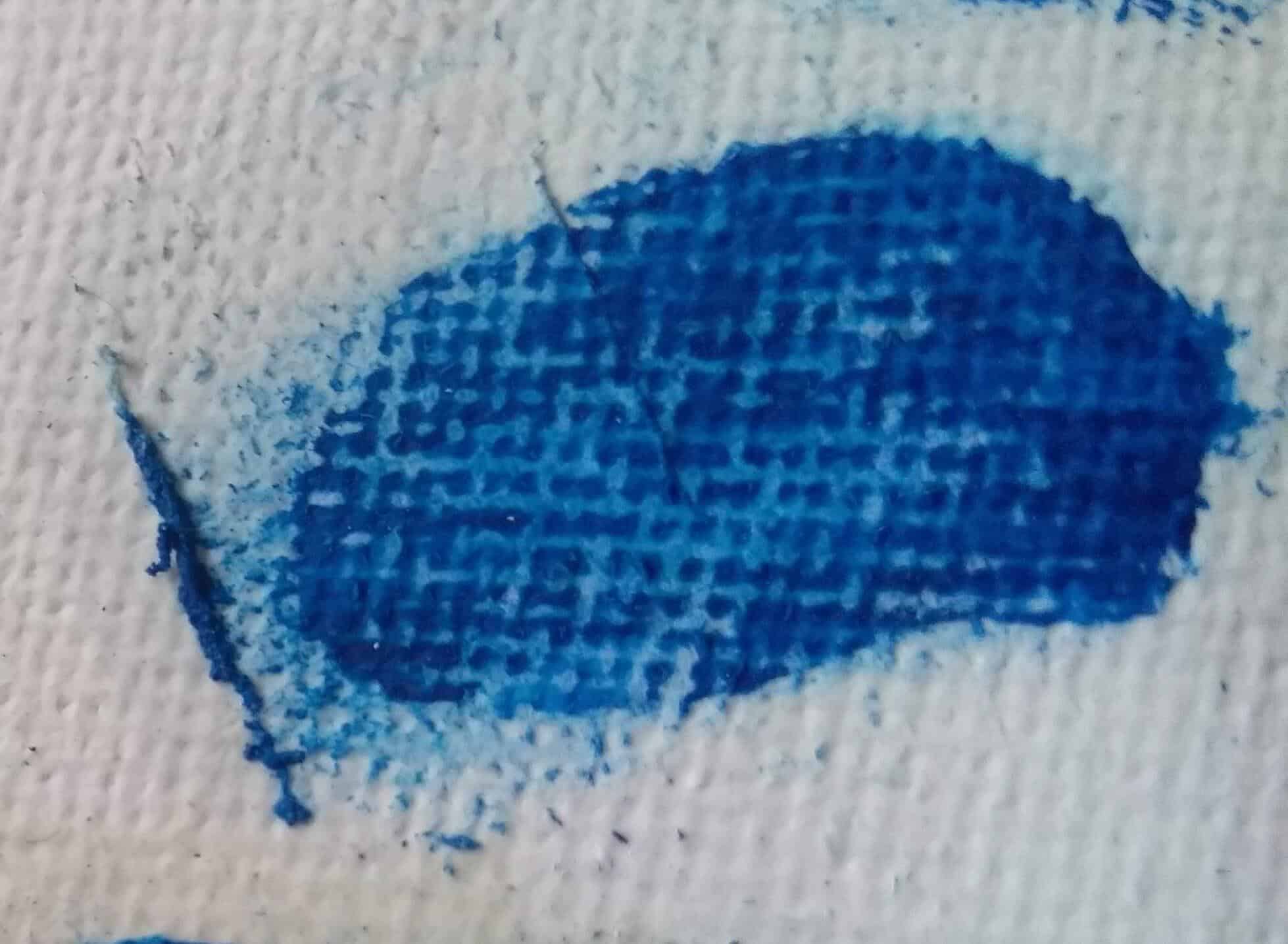
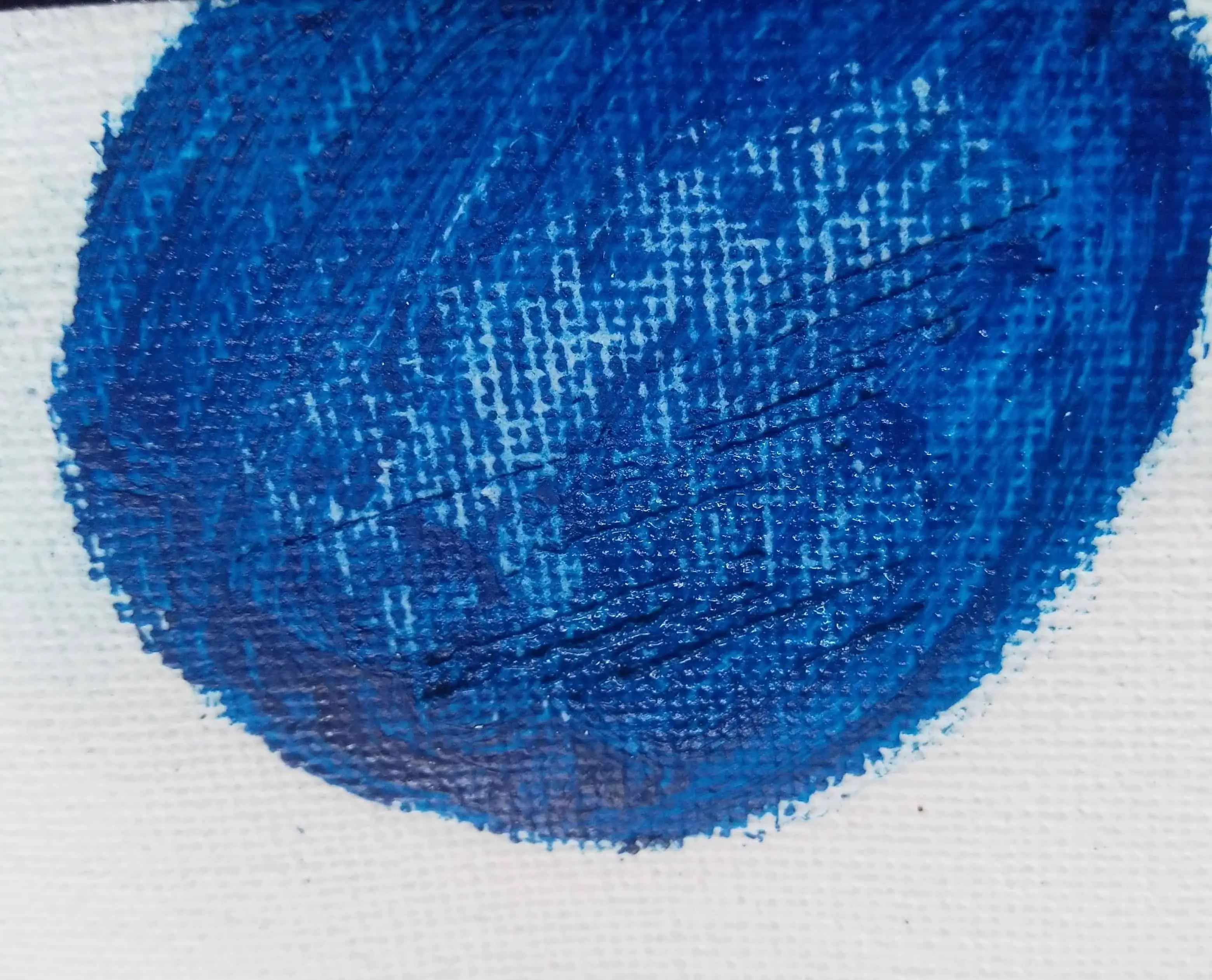
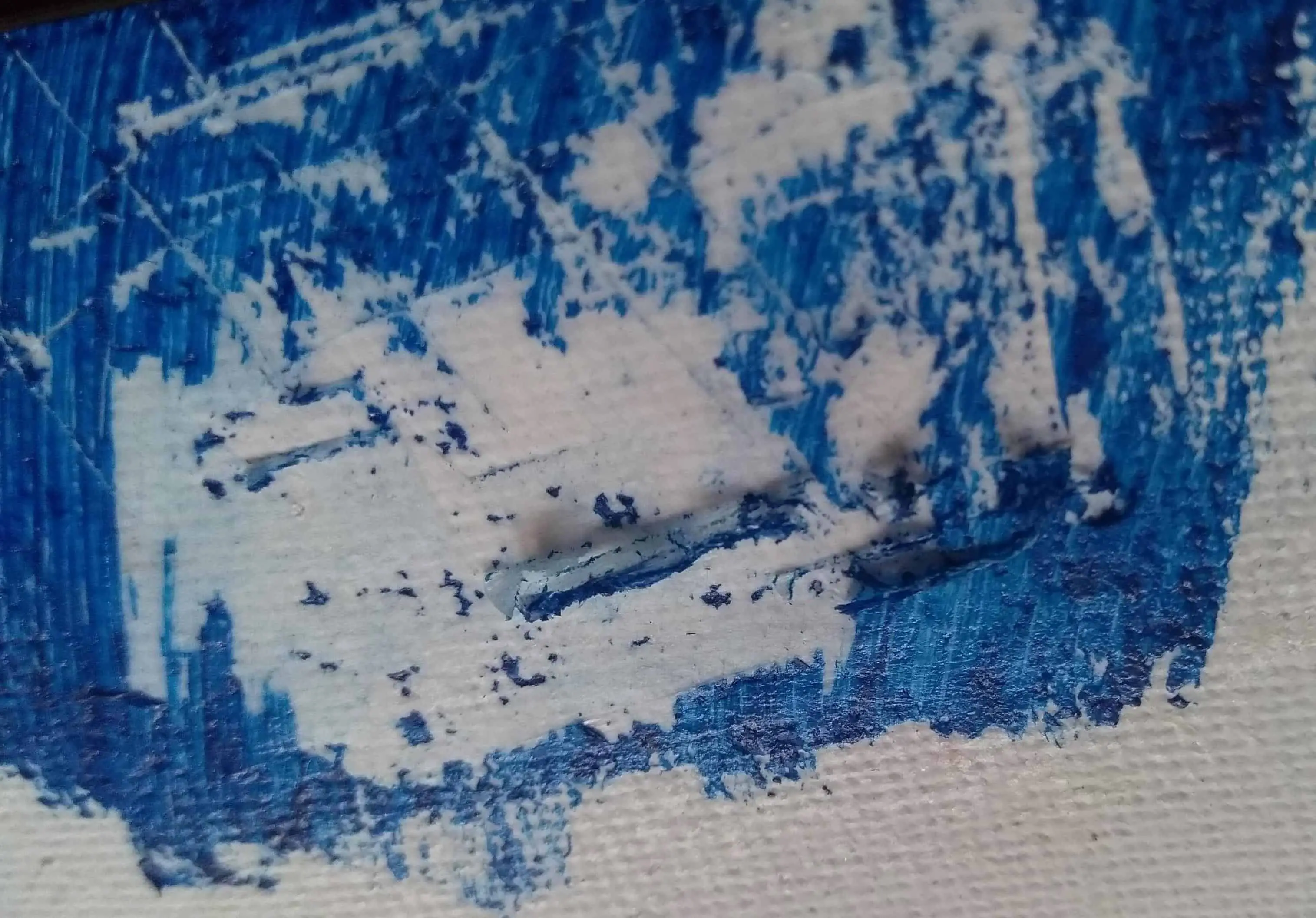
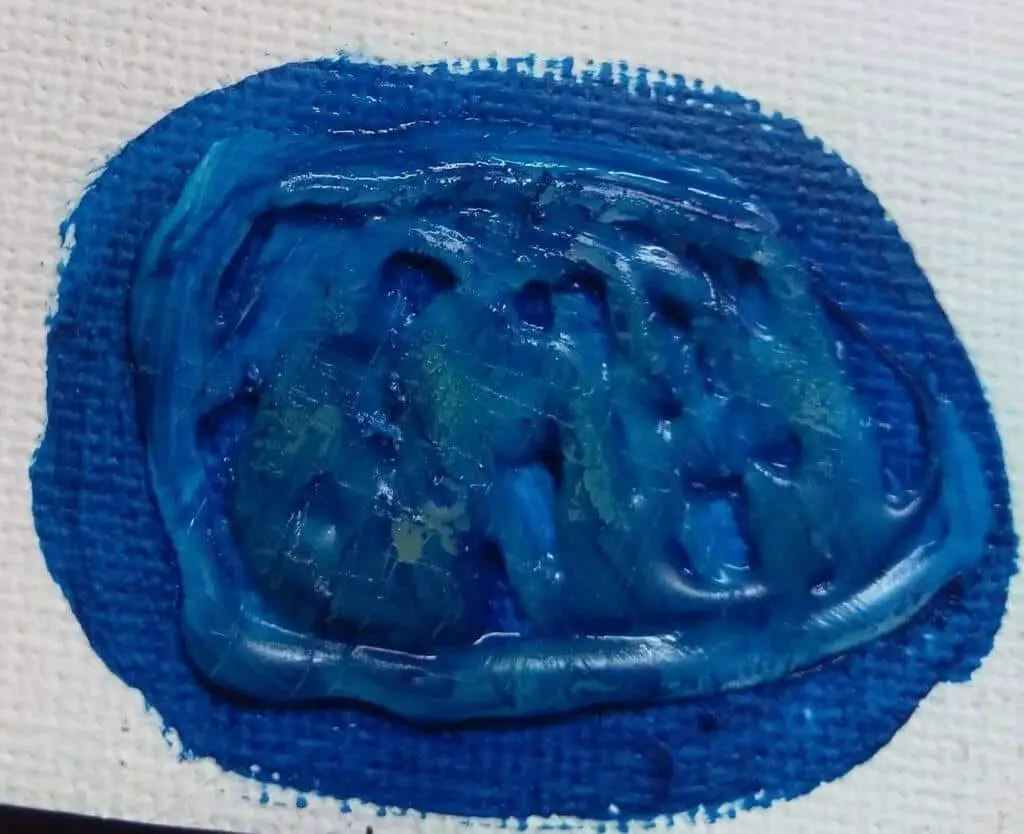
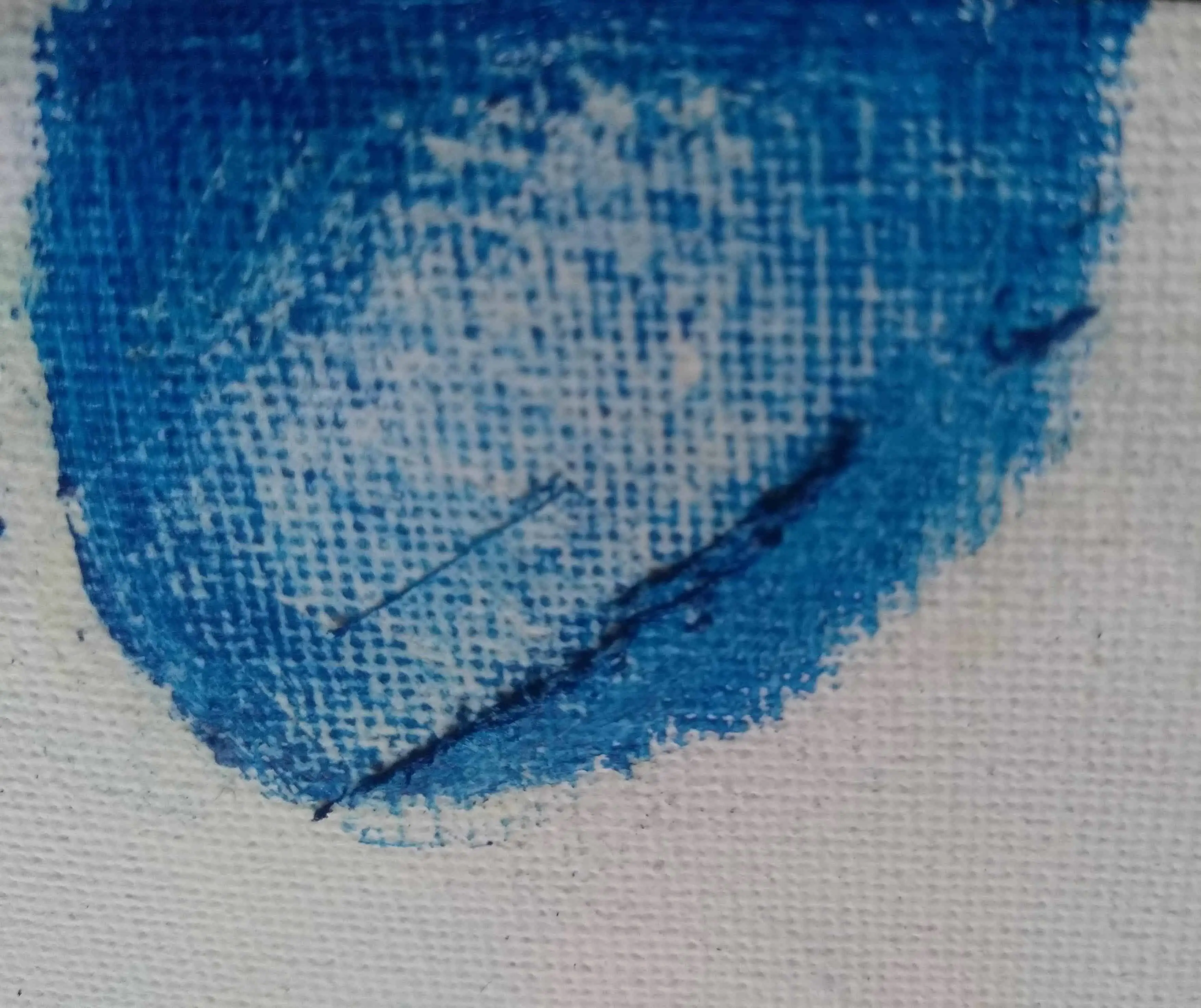
As you can see, non of the surfaces with acrylic paint tolerated water. Acrylic paint peeled off with water on surfaces. This is why it is important to varnish your painting. Varnish creates a barrier between the painting and the environment and protects the painting from the environment. Varnish can increase the paint’s tolerance to water.
If you are interested to know how to make acrylic paintings waterproof you can read the following article: Is acrylic paint waterproof? What you need to know. There you will find different methods used by artists to make their paintings waterproof.
How do make acrylic paint stick to different surfaces?
When you find any surface where acrylic pant does not stick, there are a few things you can do. Following are some of them. After doing these things do the adhesion test to check if the paint sticks to the surface well.
Surface preparation to stick acrylic paint
Surface preparation is most important for any paint to adhere to a surface. It provides teeth and proper absorption to adhere to a surface. Following are the ways you can prepare different surfaces.
Sticking acrylic paint on the shiny or oily surface
If you decide to paint on a hard shiny surface, sand the surface with sandpaper. It will provide teeth that paint can adhere to. Although my experiment suggests you can paint acrylics over oil, it is a best practice to remove oil or grease on a surface before painting.
However, oil painting can be done over acrylic paint, but not vice versa. The reason is acrylic paint films have some pores that oil paint can penetrate to and bond with. So oil paint will stick to acrylic paint. But oil paint dries to a rigid, water-resistant film that does not adhere to acrylic paint well. Therefore avoid painting acrylic over oil paint.
If you are going to paint on a shiny surface, make sure to sand the surface first. Then cover the surface with at least two coats of gesso. Sand between the coats. Then apply the paint and seal with varnish.
Make sure all surfaces are free of oil, wax, and grease. Also, the surfaces should not have any loose particles.
Sticking acrylic paint on fabric
If you are painting on fabric, make sure to wash the fabric to remove any starch or sizing. Use fabric medium with acrylic paint. You can also use a flow aid for this. Do a test run before doing the actual painting.
Sticking acrylic paint on canvas
If using canvas, prime it with gesso, matte medium, or matte gel. Using acrylic paint without priming any surface can lead to yellowing or discoloration. Yellowing can also happen due to low-quality paints.
Sticking acrylic paint on plywood
If using plywood, it will need 2 – 5 coats of gesso. However harder woods are less porous and need less gesso to seal. Paint on the gessoed surface and seal with varnish.
Sticking acrylic paint on foamboard
If using foam board, apply two coats of gesso and lightly sand between the coats. Let it dry overnight and apply the paint. Varnish the finished painting.
Sticking acrylic paint on metal, glass, and plastic
Sand the surface first. Remove any residual dust or grease by washing with soap and water, then with rubbing alcohol. Coat with an industrial, solvent-based, primer-sealer. Allow to cure it for 3 days.
Do the adhesion test for the primer-sealer. Apply gesso and re-do the adhesion test. Apply paint and finish with varnish. For plastic, you might not need to apply an industrial primer-sealer.
I have written several articles on how to stick acrylic paint on metal, sticking acrylic paint on glass, sticking acrylic paint on acrylic plastic (plexiglass), sticking acrylic paint on ceramic, and sticking acrylic paint on plastic. You can find the detailed process of sticking acrylic paint on each surface in the article along with a video guide.
Sticking acrylic paint on concrete
Concrete must be fully dry and cured for 8 to 12 weeks. All moisture should be gone at the time of painting. Also, there shouldn’t be any silicones or waterproofing cement paint. These will lessen adhesion.
Apply matte gel medium to seal the wall. This will reduce the amount of paint needed. When fully dry, apply one or two coats of gesso, and let it dry overnight. Paint with acrylic on the next day.
Sticking acrylic paint on ceramic
unglazed ceramic can be prepared for acrylic painting by simply applying gesso on the surface, like on canvas. You can apply 1 to 2 coats of gesso. Let the gesso dry overnight and start painting. Choose a gesso with the appropriate tooth, otherwise, it will be difficult to cover the ceramic with paint.
I have written a full guide on painting ceramics with acrylic paint. You will also find a video guide that shows the full process of painting a nice design on a ceramic bowl.
Other than these you can stick the vinyl onto acrylic paint which can be used to put a nice quote on your abstract acrylic paint. If you are interested read the following article; How to stick vinyl to acrylic paint: in 5 easy steps.
Choose the right surface
If you are using paper for acrylic painting, make sure to seal the paper first to prevent paint absorption into the paper fiber. You can apply gesso over the paper as the sealant. Matte medium and matte gels can also be used. Use heavier papers to prevent warping.
As acrylic is a versatile paint, you can paint almost anything with acrylic. The most important steps are preparing the surface well and sealing the final painting.
I have written a whole article about canvas alternatives for acrylic painting. You will find some surfaces which you did not think of before for acrylic painting in that article.
Conclusion
Acrylic paint sticks to almost any surface. However, there are some exceptions such as having wax or grease over the surface. You can remove them by sanding them, washing them with soap and water, and wiping them with rubbing alcohol.
Apply a primer like gesso before applying acrylic paint. After finishing the painting seal it with varnish. You can do the adhesion test to test the compatibility of paint to the surface as described
FAQ
Does acrylic paint stick to everything?
Acrylic paint does not stick to everything. It will not stick to greasy, oily, and shiny surfaces. You can stick acrylic paint to most of the surfaces by sanding and priming the surface. Applying a varnish as finishing is important to protect the painting from the environment and moisture.
How do you keep acrylic paint from sticking?
Acrylic paintings usually stop sticking together after the full curing period of 3 to 4 weeks or varnishing the paint. Other than that, keeping wax paper in between art pages, applying talcum powder on a varnished painting, and painting in a less humid environment also helps.
Will hair spray seal acrylic paint?
Hair spray cannot stick to acrylic paint as they chemically react together. Some paints tend to be gooey and may even melt when contacted with hairspray. Hairspray is not lightfast and the painting will be yellowed over time. The best option for sealing is varnishing.

